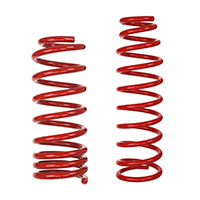Treatment for Alcohol Problems: Finding and Getting Help National Institute on Alcohol Abuse and Alcoholism NIAAA
Excessive alcohol use is a leading cause of preventable death in the United States, with alcohol-related deaths increasing during the pandemic. The Substance Abuse and Mental Health Services Administration recommends that physicians offer pharmacotherapy with behavioral interventions for patients diagnosed with alcohol use disorder. Disulfiram has been commonly prescribed, but little evidence supports its effectiveness outside of supervised settings. Other medications, including varenicline and baclofen, may be beneficial in reducing heavy alcohol use.
A health care provider can look at the number, pattern, and severity of symptoms to see whether AUD is present and help you decide the best course of action. This guide is written for individuals—and their family and friends—who are looking for options to address alcohol problems. It is intended as a resource to understand what treatment choices are available and what to consider when selecting among them. For more information, please visit the NIAAA Alcohol Treatment Navigator®, an online tool that helps individuals find the right treatment for them—and near them. The Navigator offers a step-by-step process to finding a highly qualified professional treatment provider. Many people with AUD do recover, but setbacks are common among people in treatment.
E-Health Alcohol Treatment Tools*
A support group or care program may be helpful for you and your loved ones. These programs are designed to encourage you, teach you about coping with life in recovery, and help you manage cravings and relapses. This medication may be able to help those who stop drinking alcohol and need help with cognitive function. Long-term alcohol misuse damages the brain’s ability to function properly. The U.S. Food and Drug Administration (FDA) has approved three medications for the treatment of alcohol use disorder. Your doctor can talk about a medication’s pros and cons, availability, and more with you.
This form of therapy is focused on identifying the feelings and situations (called “cues”) that contribute to heavy drinking and managing stress that can lead to a return to drinking. The goal is to change the thought processes that lead to alcohol misuse and to develop the skills necessary to cope with everyday situations that might trigger alcohol misuse. You must be opioid-free before receiving naltrexone unless your healthcare provider decides that you don’t need to go through detox first. Instead, your doctor may decide to give this medication in a medical facility that can treat you for sudden opioid withdrawal. Today there are more options available for treating alcohol use disorder (AUD) than ever before.
Ultimately, there is no one-size-fits-all solution, and what may work for one person may not be a good fit for someone else. Simply understanding the different options can be an important first step. If you take more naltrexone tablets than you should, alcoholic ketoacidosis smell tell your Doctor or Pharmacist or contact your nearest hospital emergency department immediately.
Options for Treatment
This is important because naltrexone can also block the effects of opioid-containing medicines that might be prescribed for you for pain, cough or colds, or diarrhea. You should stop drinking alcohol or using opioids before starting this medicine. To avoid precipitated opioid withdrawal, it is recommended you should have an opioid-free interval of a minimum of 7 to 10 days if previously dependent on short-acting opioids. Patients transitioning from buprenorphine or methadone may be vulnerable to precipitation of withdrawal symptoms for as long as two weeks. For alcohol use disorder, naltrexone helps people lessen their drinking behaviors and avoid relapses, cws symptoms and over time, cravings for alcohol will decrease.
After taking this medicine, your body will be more sensitive to opioids. If you use an opioid medicine in the future, you will need to use less than before the naltrexone treatment. Using the same amount of opioids you used before could lead to overdose or death.
Drugs used to treat Alcohol Use Disorder
It is rare that someone would go to treatment once and then never drink again. More often, people try to quit or cut back over time, experience recurrences, learn from them, and then continue on their recovery journey. For many, continued follow-up with a treatment provider is critical for overcoming alcohol problems. The provider can help adjust the treatment plan and aid long-term recovery. If you have any of these symptoms, alcohol may already be a cause for concern. The more symptoms you have, the more urgent the need for change.
Naltrexone
If you are developing your own symptoms of depression or anxiety, think about seeking professional help for yourself. Remember that your loved one is ultimately responsible for managing their own illness. Certain medications have been shown to effectively help people stop or reduce their drinking and avoid a return to drinking.
This medicine also modifies how the hypothalamus, pituitary gland, and adrenal gland (hypothalamic-pituitary-adrenal axis, HPA axis) interact to suppress the amount of alcohol consumed. Group therapy or a support group can help during rehab and help you stay on track as life gets back to normal. Alcohol use disorder is what doctors call it when you can’t control how much you drink and have trouble with your emotions when you’re not drinking. Some people may think the only way to deal with it is with willpower, as if it’s a problem they have to work through all on their own. The medications listed below are related to or used in the treatment of this condition. Treating any and all alcohol-related problems can improve your quality of life and your chances of staying sober.
- Long-term alcohol misuse damages the brain’s ability to function properly.
- Ask different programs if they offer sliding-scale fees—some programs may offer lower prices or payment plans for individuals without health insurance.
- It is rare that someone would go to treatment once and then never drink again.
- Behavioral treatments—also known as alcohol counseling, or talk therapy, and provided by licensed therapists—are aimed at changing drinking behavior.
- If you’re thinking about suicide, are worried about a friend or loved one, or would like emotional support, the Lifeline network is available 24/7 across the United States.
Seeking professional help early can prevent a return to drinking. Behavioral therapies can help people develop skills to avoid and overcome triggers, such as stress, that might lead to drinking. Medications also can help deter drinking during times when individuals may be at greater risk of a return to drinking (e.g., divorce, death of a family member). Acamprosate and naltrexone are two different medications that are used in the treatment of alcohol use disorder. They work in different ways to help people who are dependent on alcohol to abstain from drinking it.
Alcoholics Anonymous® (also known as “AA”) and other 12-step programs provide peer support for people quitting or cutting back on their drinking. Combined with treatment led by health care providers, mutual-support groups can offer a valuable added layer of support. If you feel that you sometimes drink too much alcohol, or your drinking is causing problems, or if your family is concerned about your drinking, talk with your health care provider. Other ways to get help include talking with a mental health professional or seeking help from a support group such as Alcoholics Anonymous or a similar type of self-help group.
A health care provider might ask the following questions to assess a person’s symptoms. Too much alcohol affects your speech, muscle coordination and vital how to force yourself to pee for a drug test centers of your brain. A heavy drinking binge may even cause a life-threatening coma or death. This is of particular concern when you’re taking certain medications that also depress the brain’s function.
Your healthcare provider may need to stop treating you with this medication if you get signs or symptoms of a serious liver problem. Tell your healthcare provider about any reaction at an injection site that concerns you, gets worse over time, or does not get better by two weeks after the injection. Instead, these are groups of people who have alcohol use disorder. Examples include Alcoholics Anonymous, SMART Recovery, and other programs. Your peers can offer understanding and advice and help keep you accountable. Always consult your healthcare provider to ensure the information displayed on this page applies to your personal circumstances.







